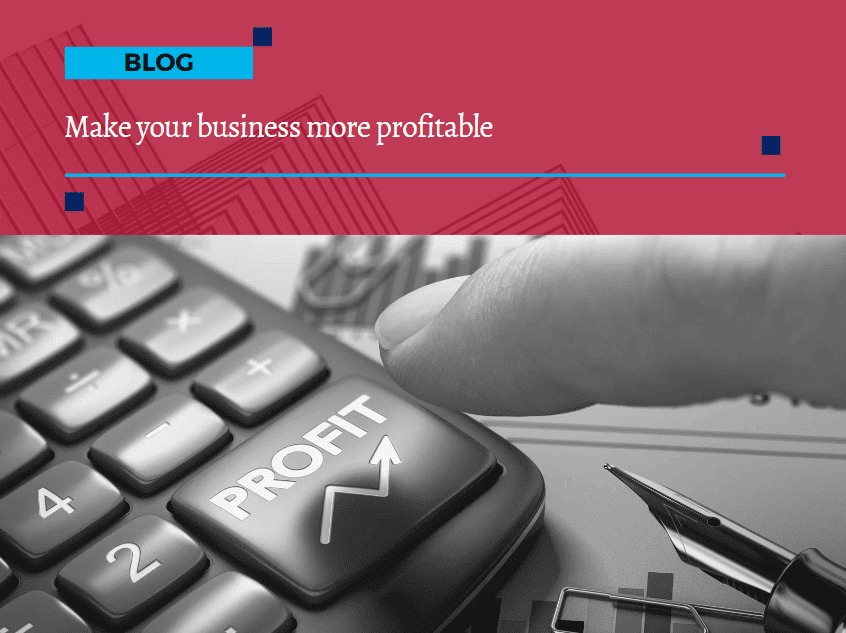
Make your business more profitable
Make your business more profitable
Is making your business more profitable at the top of your business goals this year?
Achieving significant profit is not an overnight feat. It requires a steadfast commitment, a clear focus, and a meticulously crafted strategy aimed at enhancing profitability.
This entails a comprehensive review of your business model and an examination of every operational area to identify opportunities to reduce costs, increase margins, and ultimately maximise revenue.
Understanding Profitability
Profitability is the ability of a business to earn a profit.
A profit results when the total income generated by the business exceeds the total expenses incurred. However, simply generating revenue is not enough; effective management of costs and strategic pricing are crucial to realising a substantial profit.
Strategic Review of Your Business Model
The first step in boosting your profitability is to conduct a thorough review of your existing business model.
This analysis should cover all aspects of the business, from supply chain management to customer relationship handling.
By understanding the nuances of each component, you can pinpoint inefficiencies and areas for cost savings that directly contribute to the bottom line.
Focus on your key drivers
Having surplus cash at the end of the year allows you to invest back into the business, fund your growth plans and increase the size of your own dividends and drawings as the owner.
To achieve these profits, it’s important to focus on the key financial drivers in your business.
To drive profits:
Boost Sales
Enhancing sales volume is a direct path to increasing net revenue. This can be achieved by investing in marketing, amplifying sales activities, and expanding business development efforts. Each of these initiatives should be tailored to meet the unique needs and preferences of your target market.
Increase Prices
Setting a higher price point can significantly enhance your profit margins, especially if you manage to keep the cost of goods sold low. This strategy needs to be balanced with market demand and customer value perception to avoid any negative impacts on sales volume.
Cut Costs
Operational costs and overhead expenses can diminish your profit potential. Implementing effective spend management and cost reduction strategies are crucial for maintaining a lean operational model. Regularly reviewing supplier contracts, reducing waste, and optimizing workflows are practical steps towards cost efficiency.
Reduce Taxes
Tax liabilities often represent a significant expense for businesses. Engaging in sensible tax planning and taking advantage of available tax reliefs can substantially lower your tax burden and increase your profitability. Consulting with tax professionals can provide insights into new tax saving opportunities and compliance strategies.
Talk to us about boosting your profits
At First Class Accounts Ovens & Murray and Busy01 Consulting, we help businesses like yours optimise their profit margins.
If you'd like to make your business more profitable, we're here to help:
- review your business model
- identify your key financial drivers
- proactively drive your profit performance.




